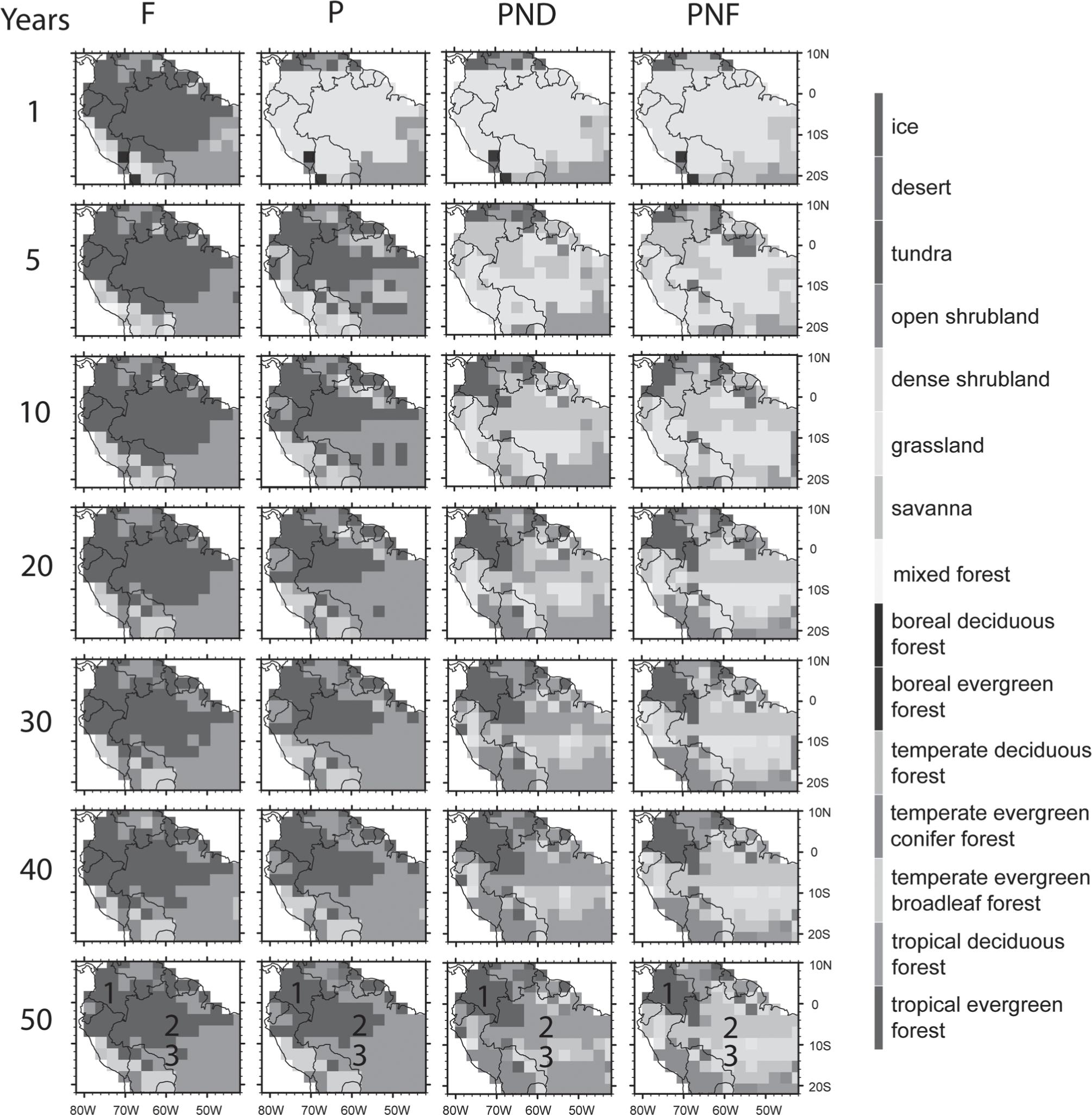Amazon tropical forests are being replaced by pasturelands and croplands, but they sometimes revert to regrowth forest when abandoned after a period of agricultural use. Research suggests that this secondary regrowth is limited by climate and nutrient availability and, using a coupled biosphere-atmosphere model, we investigated patterns in the regrowth of the Amazon rainforest after a full deforestation event, considering different types of nutrient stress. We found that, over a 50 year regrowth period, the reduction of precipitation caused by large-scale deforestation was not sufficient to prevent secondary forest regrowth, but this decrease in precipitation combined with nutrient limitation, due to logging and frequent fires, did indeed prevent forest regrowth in central and southern Amazonia, leading to a savannization. These results are concerning, as the northern Mato Grosso region has the highest clearing rate in Amazonia. The low resilience of the forest under nutrient stress indicates that a large scale disturbance could greatly expand the area suitable for cropland, accelerating forest disappearance.
Amazon; climate; deforestation; ecosystem model; net primary production; savannization




